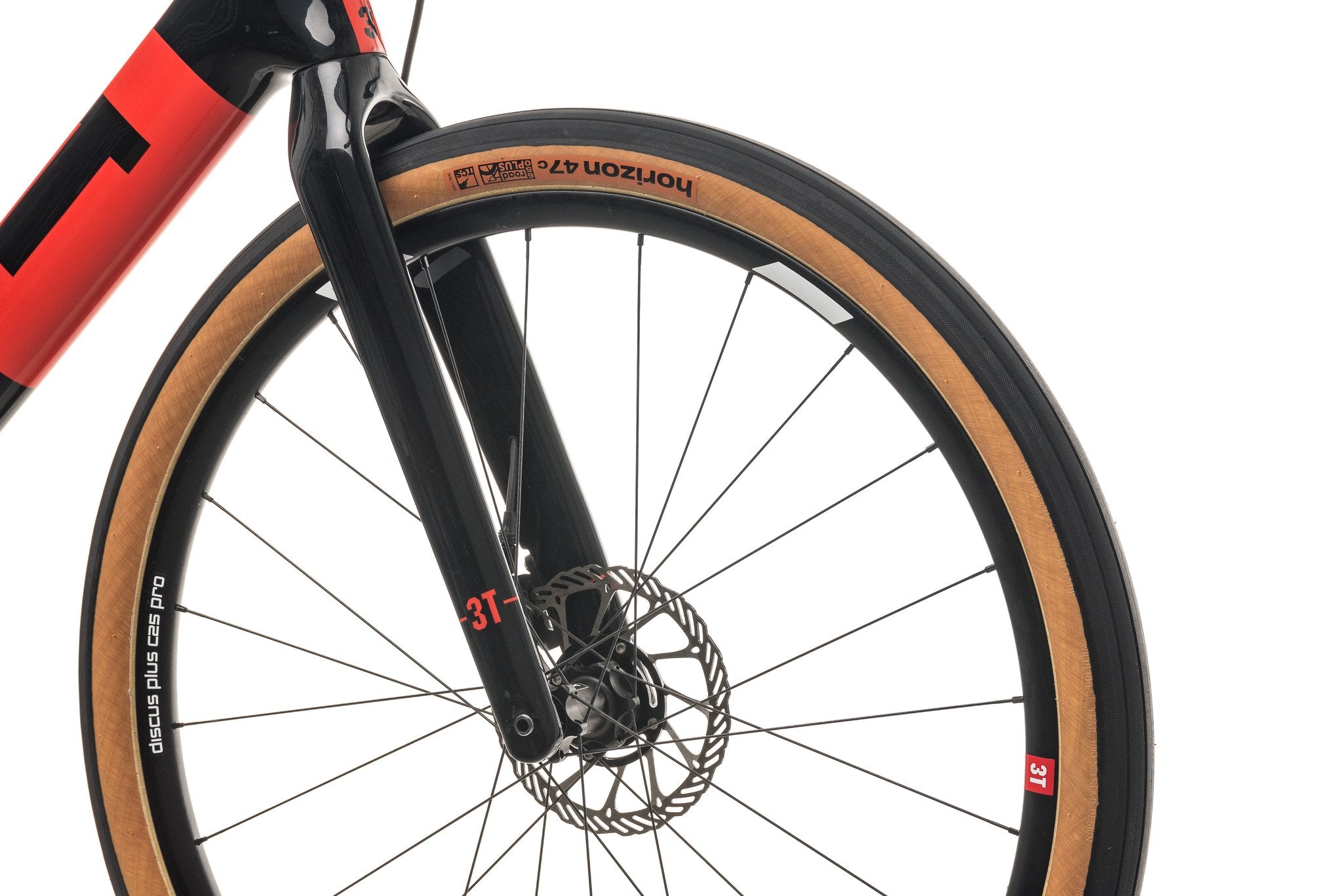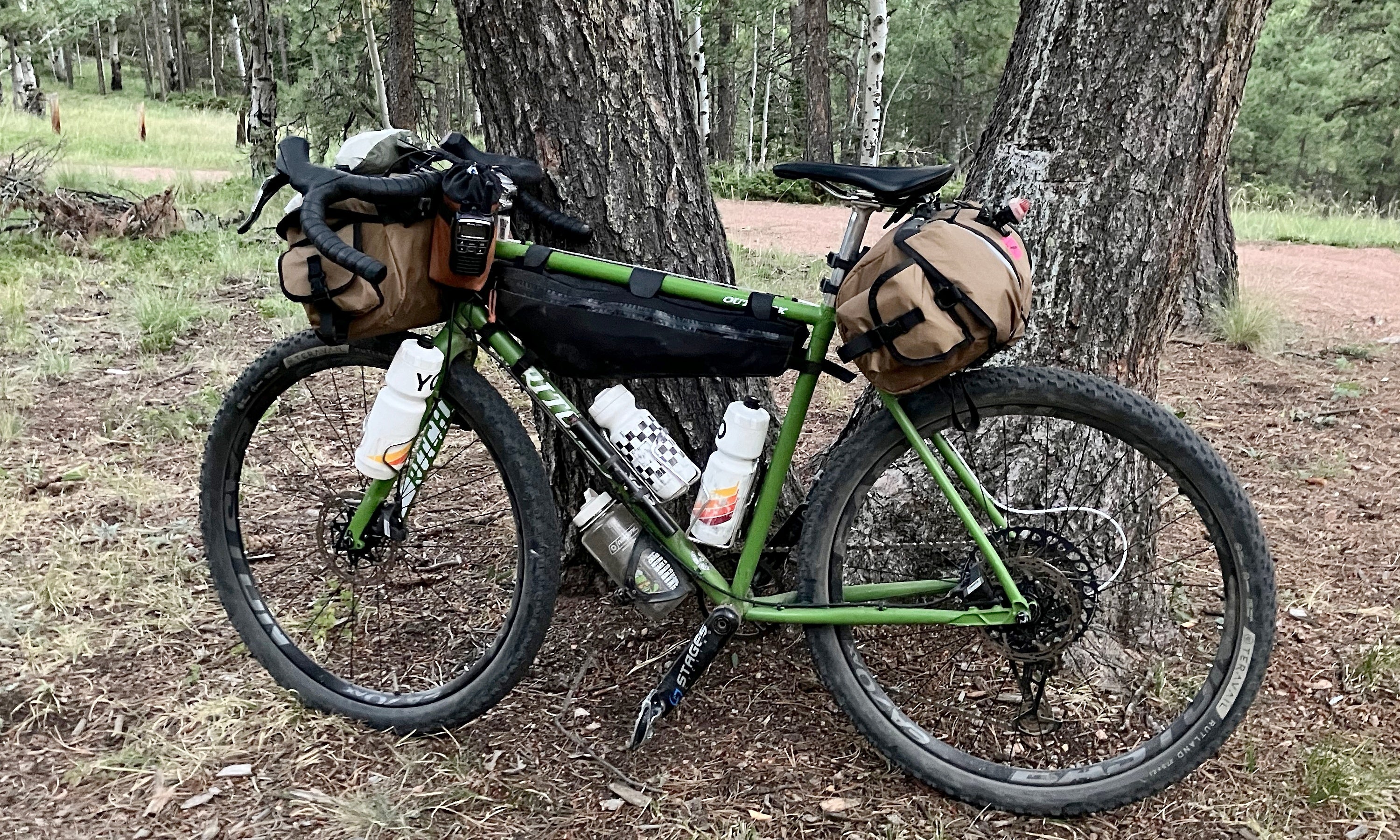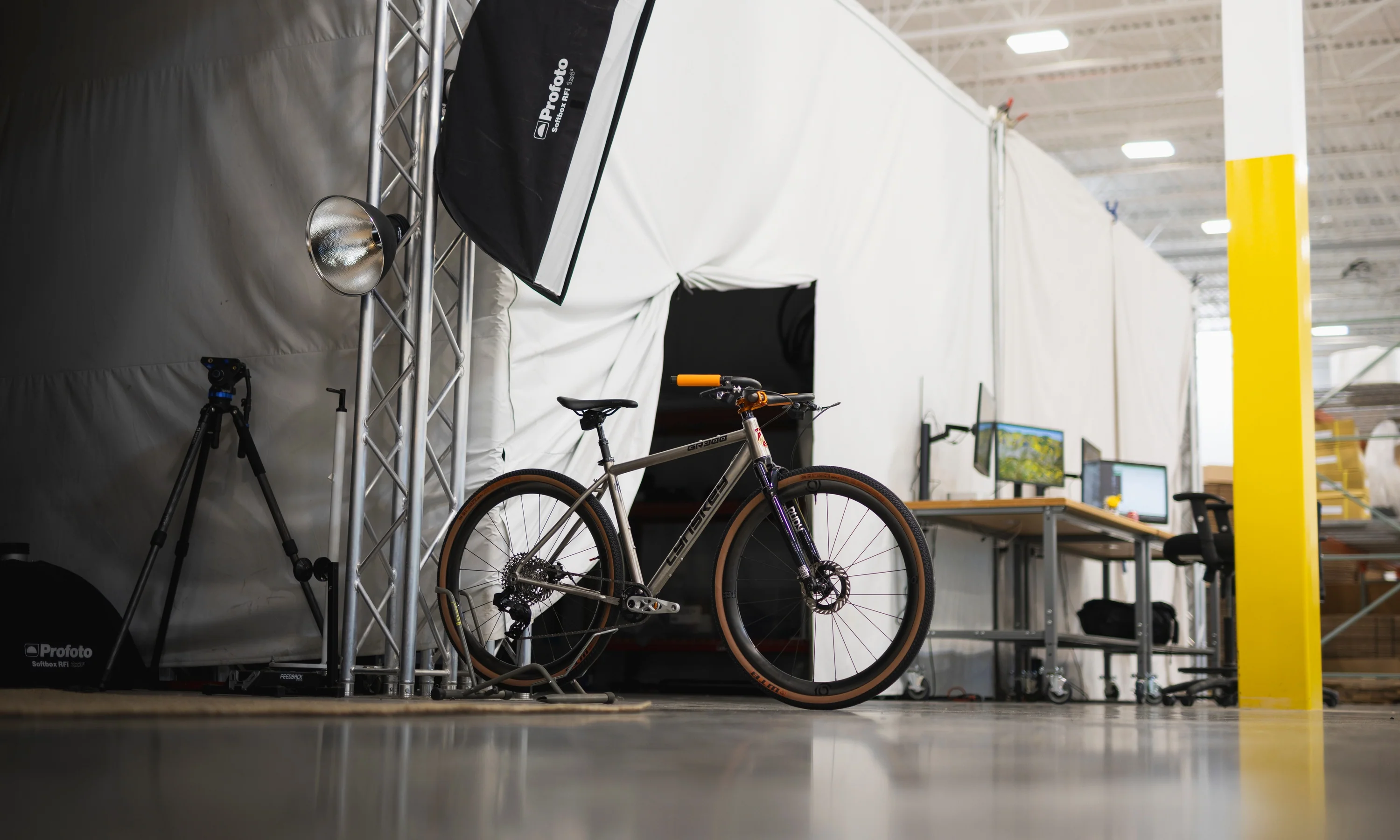Photo: Josh Weinberg | The Radavist
Sneakerheads are obsessed with collecting shoes, so I suppose you could call me a tirehead. Instead of Jordans and Yeezys, I have a closet filled with new and used bike tires of every size, color, and tread pattern. Tires are your bike’s sneakers, but they’re more about function than fashion. The tire you choose has a massive influence on your speed, traction, and comfort.
[button]SHOP 700C TIRES[/button] | [button]SHOP ALL TIRES[/button]
Gravel tires deserve an extra bit of attention, facing surfaces that vary from glass-smooth tarmac to loose and rocky trails. If your tires are perfect, you’ll be in gravel grinding heaven. If they’re not, even the most capable gravel bike can feel skittish or slow.
Choosing the right tire will depend on your local terrain and riding aspirations. Here are the key elements you should pay attention to when shopping for gravel tires, and some of my favorite gravel tires that I’ve used over years.
 Photo: Josh Weinberg | The Radavist
Photo: Josh Weinberg | The Radavist
Gravel tire tread
Gravel tires can have tread ranging from slick/file treads to aggressive mountain bike-style knobs. Slick tires minimize rolling resistance on smooth surfaces while knobbier tires are better at finding traction on loose surfaces. The right tread will provide the perfect compromise between speed and traction for your terrain and riding style.
Slick/file tread gravel tire
 WTB Horizon slick tire on a 3T Exploro.
WTB Horizon slick tire on a 3T Exploro.
Slick and file tread gravel tires are the best option for riders who spend the majority of their time on pavement and smooth dirt and gravel roads. Because there are no raised knobs, rolling resistance is minimized on smoother surfaces. Many “slick” tires will actually use a low-profile file or diamond tread to provide a bit of extra traction on dirt and gravel.
Popular models: Panaracer GravelKing Slick ($49.99), Maxxis Refuse ($45.00), Maxxis Velocita ($60.00), WTB Exposure ($59.95), WTB Horizon ($59.95)
Semi-slick gravel tire
 Specialized Pathfinder Pro on a Specialized Diverge.
Specialized Pathfinder Pro on a Specialized Diverge.
A semi-slick tire will have a slick or file-tread center section to minimize rolling resistance and raised side-knobs for cornering traction on loose dirt and gravel. A semi-slick is a good compromise between a full slick and an all-rounder gravel tire. It lets you maximize speed on pavement and smooth gravel but has a little extra bite for loose surfaces.
Popular models: Vittoria Terreno Dry ($53.99), WTB Byway ($59.95), Panaracer GravelKing SS ($49.99), Maxxis Receptor ($60.00), Specialized Pathfinder Pro ($50.00)
All-rounder gravel tire
 The super-popular Panaracer GravelKing SK.
The super-popular Panaracer GravelKing SK.
These are do-it-all gravel tires. Many gravel riders choose an all-rounder tire because it provides traction on a wide variety of dirt and gravel surfaces with low-profile knobs in the center and slightly more aggressive side-knobs for cornering. These tires can even handle some loose and rowdy riding but will also pay a slight rolling resistance penalty on paved roads.
Popular models: Panaracer GravelKing SK ($49.99), Maxxis Rambler ($60.00), Schwalbe G-One Allround ($80.00), WTB Riddler ($59.95), Donnelly X’Plor MSO ($70.00)
Aggressive gravel tire
 Maxxis Ravager on a Giant Revolt.
Maxxis Ravager on a Giant Revolt.
Aggressive gravel tires have larger knobs that are more widely spaced to dig into loose surfaces and maximize traction. These tires are a good option for rough gravel, mud, and singletrack or for riders who want maximum traction and confidence when descending and cornering. These tires roll much slower on pavement and smooth gravel.
Popular models: Maxxis Ravager ($60.00), WTB Raddler ($59.95), WTB Resolute ($59.95), Schwalbe G-One Ultrabite ($84.00), Donnelly EMP ($70.00)
Mountain bike tire
 Maxxis Ikons on a Salsa Cutthroat.
Maxxis Ikons on a Salsa Cutthroat.
Some gravel bikes are capable of fitting 650b or 29” mountain bike tires. These are good for the roughest roads and trails possible on a gravel bike, or riders who simply want the extra comfort and traction of higher volume tires. Fast-rolling XC mountain bike tires are the best choice.
Popular models: Maxxis Ikon ($83.00), Maxxis Aspen ($78.00), Schwalbe Thunder Burt ($89.00)
[button]SHOP 700C TIRES[/button] | [button]SHOP ALL TIRES[/button]
Choosing the best gravel tire tread for you
Ideally, your tire tread should match the terrain you ride the most. For example, if your local riding consists of 80% pavement and 20% gravel, then pick a slick or semi-slick tire. If your pavement to gravel ratio is closer to 50/50, then an all-around tire is the better choice.
Another consideration is your off-road handling skills. A competent and experienced rider can often get away with a faster-rolling tire because they understand how to brake, corner, and control their speed on loose surfaces. If off-road handling is your weakness, then it might be a good idea to sacrifice rolling speed for traction with a more aggressive, confidence-inspiring tire.
A popular strategy in the mountain bike world is combining a fast-rolling rear tire with a more aggressive front tire. Your tires don’t have to match, and mixing treads could give you the best of both worlds.
 Photo: Josh Weinberg | The Radavist
Photo: Josh Weinberg | The Radavist
Gravel tire width
The vast majority of gravel bikes are now designed to accommodate tires between 38-45mm wide. Tires around 40mm wide are the most popular because they provide the best compromise between comfort, traction, and weight. Wider tires usually weigh more than narrower tires, but they’re also more comfortable and provide better traction because of their higher volume.
Like tire tread, choosing the right width depends on your terrain and goals. If you want your bike to feel lighter and faster, a narrower 35-38mm tire will reduce your bike’s rotating weight compared to a bigger 45mm wide tire. We know from experience that reducing rotating weight has a positive effect on your climbing speed and acceleration, so narrower tires can be a good choice for racers.
[newsletter]
My general advice for most riders is to simply choose the widest tires their frame will accept. For the average rider, the comfort and traction benefits outweigh the slight weight advantages of a narrower tire. If you find yourself fatigued from bumpy roads, going to a wider tire will allow you to run lower air pressure to soak up the bumps. If you need more confidence when leaning your bike over in loose corners, a wider tire will help there as well.
Gravel tire puncture protection
Gravel roads can range from smooth and hard-packed to chunky and sharp. For the chunky and sharp end of the spectrum, many gravel tires offer extra puncture protection with tough, puncture-resistant fabric layers in their carcass.
 A cutaway showing Maxxis' SilkShield protection layer.
A cutaway showing Maxxis' SilkShield protection layer.
The trade-off for increased puncture protection is increased weight and rolling resistance. A puncture-resistant layer often adds 30-60 grams to a tire. Because the puncture-resistant fabric makes the tire carcass tougher and less flexible (supple tires roll faster) rolling resistance increases.
But nothing is slower than a flat tire. If you’re riding on surfaces that tend to cut lighter tires, it will be worth it to run a heavier tire with more protection. A great example is the Unbound Gravel 200 race in Emporia, Kansas, which features roads of sharp flint rock that will chew up tires. Some racers will use tires like the Panaracer GravelKing SK+, which has an extra “Pro Tite Shield Plus” layer, or the Maxxis Rambler SilkShield which has a layer of Maxxis’ SilkShield fabric.
 The "+" indicates this GravelKing SK tire has a puncture protection layer.
The "+" indicates this GravelKing SK tire has a puncture protection layer.
Most tire specs and/or model names indicate whether or not they have additional puncture protection. For example, Panaracer uses a “+” designation, Maxxis uses “SilkShield,” and Terravail has “light and supple” and “durable” versions of its tires. Not all brands offer tires that have extra puncture protection. WTB, for example, specs all of its current tires with its puncture-resistant “SG2” casing which is meant to be an ideal compromise for all types of riding.
Not everyone needs extra puncture protection, especially if you’re trying to keep your bike as light and fast as possible. Use tougher tires if you ride especially rough terrain (this includes city streets filled with broken glass), if you’re a heavier rider, or you’re hard on your equipment. One thing to note is that tires with aggressive tread will generally be more puncture-resistant because the additional rubber used in the knobs actually helps prevent cuts to the tire carcass.
As a final point, pretty much all gravel tires are tubeless ready and should be run tubeless. Not only does tubeless reduce weight and allow you to run lower pressures, but tubeless sealant can save your ride in the event of a puncture. Plus, you can use tire plugs which are a quick and effective way to rescue a punctured tire that sealant can’t seal.
[button]SHOP 700C TIRES[/button] | [button]SHOP ALL TIRES[/button]
My favorite gravel tires
Panaracer GravelKing SK
 My current Lynskey titanium gravel bike set-up with GravelKing SKs.
My current Lynskey titanium gravel bike set-up with GravelKing SKs.
The 43mm Panaracer GravelKing SK ($49.99) is my go-to gravel tire for all-around riding. The small, tightly packed center tread rolls quickly while long, square side-knobs give you plenty of grip when leaning the bike over. The side-knob design also doesn’t squirm on pavement, which is a plus. I like to run the GravelKing SK+ on the rear since I’m a bit heavier and tend to flat the rear tire on random sharp rocks.
Maxxis Ravager/Rambler
For extra rough gravel and singletrack, my favorite set-up has been the 40mm Maxxis Ravager Exo ($60.00) on the front and the 40mm Maxxis Rambler SilkShield ($62.00) on the rear. The Ravager has a very aggressive tread pattern that works well in loose and rocky terrain. The Rambler is very similar to the Panaracer GravelKing SK in terms of rolling speed, and putting it on the rear keeps my bike feeling fast.
WTB Byway
The 44mm WTB Byway ($59.95) semi-slick is my favorite gravel tire for commuting. The slick center tread rolls quickly and feels great on pavement and smooth dirt. If I’m in a hurry, I can motor down paved streets. But when I have some extra time, I can wander off onto some gravel trails and the little bit of tread keeps things under control.
[button]SHOP 700C TIRES[/button] | [button]SHOP ALL TIRES[/button]
Where do you ride and what’s your favorite gravel tire? Let us know in the comments!

























